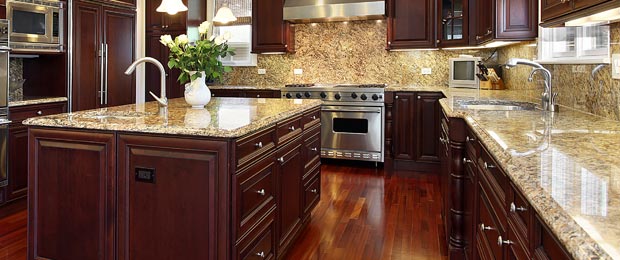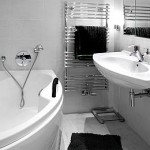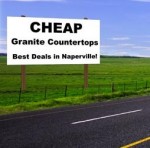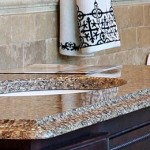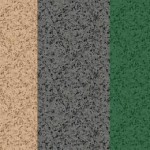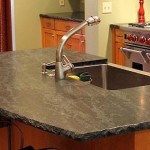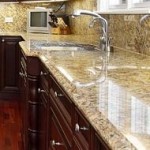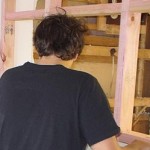The three most popular choices for kitchen and bathroom countertop materials are natural stone (granite/marble), quartz, and solid surface (i.e. Corian).
Natural Stone
Natural granite or marble for kitchen and bathroom countertops are a great choice for a remodeling project. Because they are products of nature, each is truly unique with the distinctive variations in the material that are never duplicated exactly the same twice.
There are also exotic stone materials that are breathtaking to behold, and the price can be too when the materials are less common or harder to mine. The more standard and readily available stone materials are known by some names I have listed below, but there are literally thousands of choices.
Crema Marfil is the most common marble choice, and granite colors that are popular at this point are Tan Brown (brown), Giallo Ornamental (creamy), Santa Cecilia (creamy), Uba Tuba (greenish), and Black Galaxy (black with sparkly minerals).
Quartz
Quartz is a man made product that uses natural materials. This is also a great material and is best suited for you if you want little variation in patterns and natural veins. This material also maintains the same pattern all the way through the slabs.
Solid Surface Products
Plastic based material such as DuPont's Corian line offers a very large selection of colors. A key advantage is that these materials can be made to fit with seams that are virtually undetectable.
There are pros and cons to all these materials
Granite Pros and Cons
Pros
- Least expensive of the popular choices and available in standard colors
- Incredible selection of colors; a good contractor will send you to the granite supplier to “tag” the ACTUAL slabs that will be installed
Cons
- Needs regular sealing
- With exotic patterns, it can be nearly impossible to seam so that it carries on the look of the pattern or vein in an adjoining piece, especially when it needs to be cut to turn a corner
- Potentially (and usually) visible seams
Quartz Pros and Cons
Pros
- If you prefer continuity, there is usually no variation in the pattern
- No sealing or maintenance required...ever!
- Seams are much less noticeable
Cons
- More expensive than granite in general
- Always subject to be discontinued by the manufacturer, making replacement slabs difficult or impossible to get if they are ever needed
Solid Surface Pros and Cons
Pros
- Can be assembled and finished with virtually invisible seams
- Damage can usually be buffed out by a competent and authorized contractor
- Never needs sealing
Cons
- Becoming a rare choice; any color used is subject to being discontinued
- Scratches easily
- More expensive in general than natural stone
- Can melt and leave damage with errant placement of a hot skillet or pan

